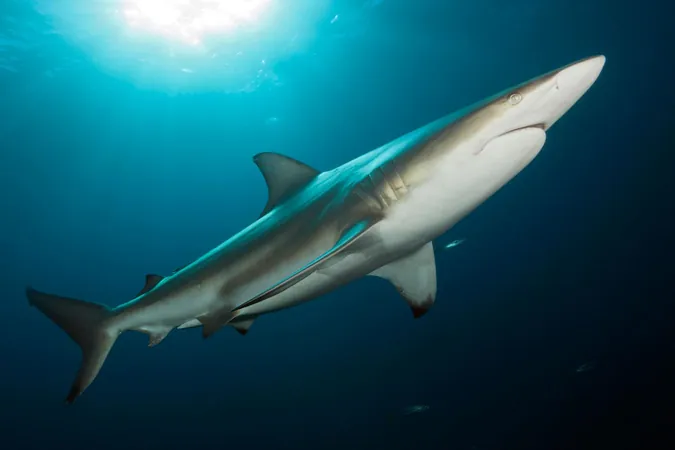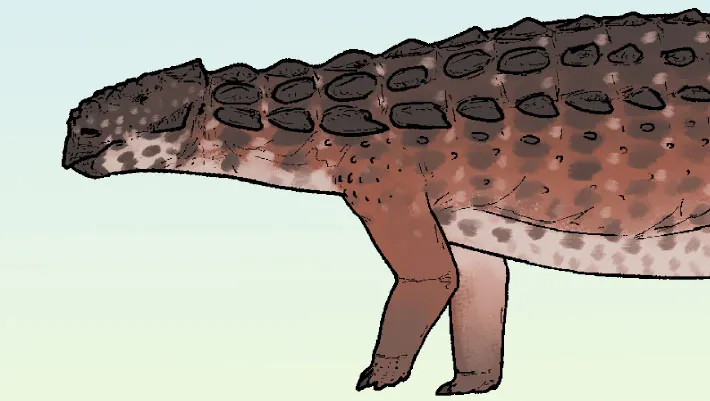
Shark Skeletons: The Ingenious Design That Defies Evolution
2025-06-01
Author: Olivia
Sharks: Masters of Adaptation
Did you know sharks have been gliding effortlessly through our oceans for over 400 million years? But here's the kicker: they don't have bones like other fish. Instead, their skeletons are made from rugged cartilage that is mineralized, providing them with a unique advantage in their oceanic pursuits.
A Groundbreaking Study
In a groundbreaking study, scientists took a microscopic dive into the intricate structure of shark cartilage, unveiling complexities that were previously hidden. Utilizing cutting-edge high-resolution 3D imaging and in-situ mechanical testing, a global team of researchers mapped out these fascinating structures to better understand how sharks maintain their remarkable strength and flexibility.
Unveiling the Blacktip Shark
Focusing on the blacktip shark (Carcharhinus limbatus), the team collaborated with experts from Florida Atlantic University, Germany's DESY, and NOAA Fisheries. Blacktip sharks are well-known for their striking black fins and are commonly found in warm coastal waters. These agile predators can reach lengths of up to 8 feet, using bursts of speed to catch their prey.
Decoding Cartilage Structure
The research revealed that shark cartilage is anything but uniform. It consists of two distinct layers: the outer 'corpus calcareum' and the inner 'intermediale.' While both layers share a chemical composition of collagen and bioapatite—the mineral found in human bones—their physical attributes are incredibly specialized. These intricate structures are laced with pores and reinforced by thick struts, allowing sharks to absorb immense stress and maintain structural integrity even under pressure.
Nature’s Spring Mechanism
Remarkably, shark cartilage behaves like a spring, absorbing energy during movement and releasing it to power their next stroke. The cartilage is interlaced with tiny, needle-like crystals aligned with collagen strands, significantly enhancing its damage resistance. Researchers likened the helical patterns found within to architectural reinforcement, a concept human engineers strive to achieve in advanced materials.
Insights for Future Innovations
Dr. Vivian Merk, lead author of the study, emphasized the concept of biomineralization, where nature combines minerals with biological structures like collagen to create durable materials. This natural engineering could inspire the development of innovative applications ranging from medical implants to protective gear.
Testing Durability to the Limits
In a series of rigorous tests, scientists applied pressure to microscopic samples of shark vertebrae, only to find that the cartilage held up remarkably well. Initial tests showed minimal deformation, with any fractures remaining confined to single layers—a testament to its built-in resilience.
The Future of Materials Science
Dr. Marianne Porter, a co-author of the study, believes that unraveling these nanostructures can lead to the creation of stronger, more flexible materials for various uses. Dean Dr. Stella Batalama echoed this sentiment, highlighting the power of interdisciplinary collaboration in seeking to replicate nature's mastery of durable design.
As researchers continue to explore the secrets of shark cartilage, the potential for groundbreaking advancements in material science is vast, paving the way for innovations that could change the landscape of medical and engineering applications forever.









 Brasil (PT)
Brasil (PT)
 Canada (EN)
Canada (EN)
 Chile (ES)
Chile (ES)
 Česko (CS)
Česko (CS)
 대한민국 (KO)
대한민국 (KO)
 España (ES)
España (ES)
 France (FR)
France (FR)
 Hong Kong (EN)
Hong Kong (EN)
 Italia (IT)
Italia (IT)
 日本 (JA)
日本 (JA)
 Magyarország (HU)
Magyarország (HU)
 Norge (NO)
Norge (NO)
 Polska (PL)
Polska (PL)
 Schweiz (DE)
Schweiz (DE)
 Singapore (EN)
Singapore (EN)
 Sverige (SV)
Sverige (SV)
 Suomi (FI)
Suomi (FI)
 Türkiye (TR)
Türkiye (TR)
 الإمارات العربية المتحدة (AR)
الإمارات العربية المتحدة (AR)